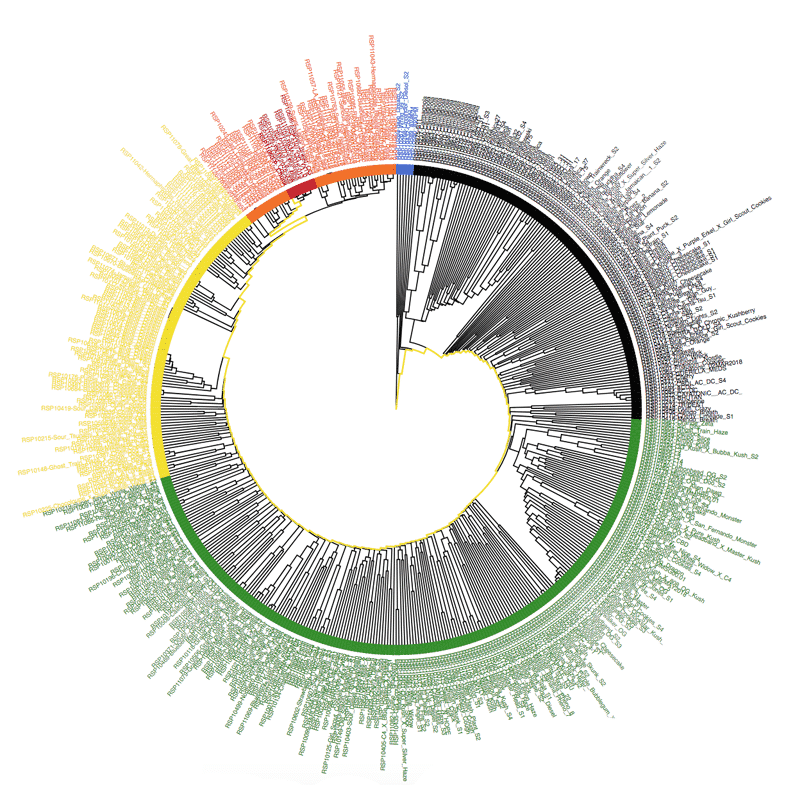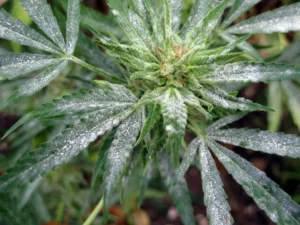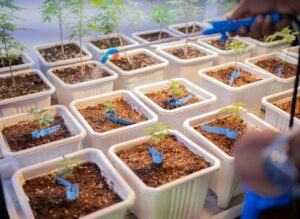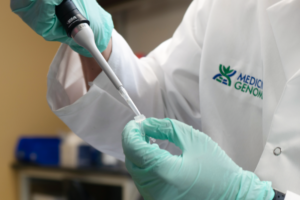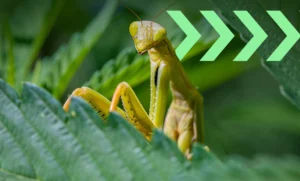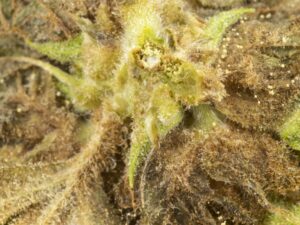Kannapedia.net has several useful tools for cannabis breeders. This platform displays the relationships of the DNA sequences in cannabis plants (4Mb mini-Exome or 876Mb Whole Genome Shotgun), including a listing of the cultivars that are most similar and most dissimilar from the sequenced cultivar.
Kannapedia also displays valuable information for breeders and cultivators who are interested in establishing prior art as a means to protect their genetics from any future patents. The blockchain registration information on each Kannapedia report serves as indisputable timestamp for proof of existence of various Cannabis “Varietals”, “Cultivars” or “Strains”.
Patent Law is a complicated topic. And in the wake of the Benzinga-Phylos Investor video, which ultimately shut the doors of the Open Cannabis Project (OCP) we have fielded a lot of questions from breeders and cultivators who are unclear about whether the sequencing they commissioned (either through us or another sequencing company) can be used to claim prior art.
Let’s explore some of the common questions we have seen around the topic. Keep in mind, We are not Patent Attorneys! Please consult one for any legal advice.
Can you patent illegal things?
Yes. You can patent cannabis plants, cannabis extractions, and cannabis growing methods, but you cannot trademark anything that is federally illegal. If your patent issues, you may not want to use a US federal court to prosecute it prior to federal legalization, but that is a topic better discussed by an IP attorney.
A partial list of cannabis patents issued to date:
- CANNABIS PLANT NAMED ‘LW-BB1′ :Derivatives of DJ Shorts work.
- Equadorian Sativa
- BiotechLLC
Published Cannabis patent applications:
- Cannabis Plant Named MIDNIGHT
- Cannabis Plant Named EREZ
- Cannabis Plant Named AVIDEKL
- Cannabis Plant Named GRASS WEEDLY
- Cannabis Plant Named Katelyn Faith
- Hemp Cultivar TM1
Can you patent living things?
Yes. While we don’t agree with this ruling, it is in place. Diamond vs Chakrabarty enabled the patenting of living things that have been human modified. Parke-Davis vs Mulford opened up the patenting of natural compounds if they have been human modified by a “learned hand” or even purified. This will likely play a role with cannabinoid extracts.
Is it true that anything that has been grown and sold before is in the public domain and can not be patented?
This is true in concept, but you need valid documentation to prove your cultivar existed in a business setting prior to the issuance of a patent that might claim your work. This is known as a prior use exemption. Many people don’t have this proper documentation as the black market avoided documentation and many websites censored cannabis content. This has led to the Biotech Institute LLC patents (9,642,317, 9,370,164, 9,095,554) that many attest describe plants they grew long before the 2013 application of the patent.
Your act of selling your cultivar HAS NOT given you prior art protection. You must document your cultivar’s existence in a way the USPTO can find and use to compare to the plants that are being submitted for patent protection. This is a very important point, and the financial risks are asymmetric. Once a patent issues on a plant that looks just like yours, there is a presumption of validity of the issued patent. The cost for you to protest this patent that didn’t cite your work as prior art is known as an ex parte re-exam and can cost more than $100K.
The stakes are high, so don’t skimp on documentation. A simple picture of plant provides no way for the USPTO to know if your plant is identical to the one they are considering for novelty. Other descriptive features are required, and we can look to the first few patents that have issued as the precedence that has been sent.
What constitutes good documentation for a plant patent?
This depends on which intellectual property protections you are looking for. Utility patents are the most valuable and are assessed by the USPTO. A good review on various plant IP strategies can be seen here. Dale Hunt also writes prolifically about this topic and describes some of the financials tiers you may want to consider for each strategy.
You will note that the first patent issued on a cannabis plant was a utility patent and used a Bt:Bd allele and a chemotype to describe the plant. Genotype and chemotype are the language that the USPTO seems to currently trusts to describe a plant utility patent. PVPs and Plant Patents have different requirements.
Is DNA sequence necessary for a patent or to prove prior art?
DNA Sequence is not necessary to prove prior art, but it is the best tool to precisely describe your plant. Sequencing data is a universal coordinate system that best describes the genetics you hope to protect. The USPTO is also well informed on how to search DNA sequencing data and how to compare it.
However, the USPTO requires valid and reproducible sequencing data. This later point is extremely important. Many organizations have downloaded Kannapedia data and published peer reviewed manuscripts with the data. This means the data is trustworthy, reviewed, and reproducible.
Conversely, there are no peer-reviewed publications showing Phylos’ sequencing methods. In fact, the sequence data that the company made public fails to pass the simplest sequence QC tools written by the Broad Institute/MIT known as GATK and Picard. Specifically, the Picard step known as Mark Duplicates rejects all of the data from these sequencing files. This is because the PCR assay was designed to only have a single PCR amplicon cover a SNP and this leads to allele specific amplification in polymorphic genomes. This allele drop out destroys phylogenetic relationships and should be not be used for registering people’s hard earned IP. There is a 35 minute video describing the technical details here.
Why use the blockchain to store genetic information?
The fact that blockchain technology can provide immutable timestamps that are housed independent from the provider that generated the sequencing information is a very critical point. No matter what happens to Medicinal Genomics or Kannapedia, there is a record of each StrainSEEK® test on the blockchain network that can never be erased or edited. Kannapedia hosts links the sequence files and links to the blockchain transactions. On the other hand, The Phylos galaxy is editable and often displayed Admin Password to its users compromising its validity as a prior art repository.
It is important to note that the data put into the blockchain is not your sequence data but a cryptographic hash of the data. People viewing the blockchain cannot discern your sequence but you can demonstrate how your sequence creates the astronomically unique hash in the blockchain transaction. With that said, just performing the blockchain transaction does not constitute prior art as your sequence has not been published. The sequence IS published on Kannapedia, but that publication step is optional. Some customers have opted out of Kannapedia publication when sequencing cultivars for research purposes, and not IP.
What other data does Kannapedia provide for IP purposes?
Kannapedia aligns all DNA sequencing to Jamaican Lion. This is a genome that closely matches (consult an attorney on this) the claims of the Biotch LLC patent. The Jamaican Lion genome also has documentation dating back to 2011, where it won a San Francisco Cannabis cup. We have sequenced the ancestral mother genome and the recent seeds in circulation to verify these genetics. Comparing your sequence to something that has a prior date to the Biotch LLC patent, can provide you with information regarding your potential infringement. Kannapedia displays each cultivar’s coverage of the Bt:Bd allele, mentioned in Claim 1 of the Biotech Institute LLC patents (claim 1 shown below).
Kannapedia reports also include a comparison to all cannabis genome data that has been deposited in NCBI as of 2018. This includes the compromised sequence Phylos eventually put public and the data Ryan Lynch published. It does not include the Sawler data yet as there are some ambiguous sample assignments in that data set that make this data untrustworthy at this point in time (Non-unique DNA barcodes). This is a function the Galaxy failed to do thus it was an incomplete database for proper prior art searching.
Finally, cultivators and breeders have the option to submit terpene and cannabinoid data with their sample, which is displayed on the Kannapedia report as well as the VCF files.
Why should I care about cannabis patents?
Many Cannabis plant patents are issuing and many more are published as Patent Applications. The Cannabis IP game is in full swing. You can disagree (as we do) with the ethics of plant patents, but to ignore them as a result of this ethical protest may be financially devastating to you. We hope Kannapedia will help in not only teaching you about the genetics of breeding but also protecting your hard-earned work either defensively or offensively with modern distribute ledger enabled documentation of your strains. This is not a replacement for good IP counsel. It is just a very affordable tool in the process.
Why should I trust Medicinal Genomics and Kannapedia?
You should not rely on trust. Trust is what has gotten us here. Trust in “Non-Profits”. Trust in peoples words. Trust in fancy 3D graphics. Trust in “people from Oregon”. None of these have panned out. The cryptocurrency field was born on the principles that you should trust no one. The goal is to not trust 3rd parties but instead trust incorruptible cryptographic math and to dis-intermediate 3rd party risk.
We built Kannapedia on a blockchain so your timestamps and genetics are on a distributed ledger we cannot edit or control. 90% of start ups fail. Knowing this we built a prior art repository that doesn’t rely on our survival or shifting business plans. You have your DNA sequence and the proof of its’ existence (a hash) is on a public ledger we can not control. Instead, it exists on a ledger that has secured billions of dollars of trust because it has proven to be IMMUTABLE for over a decade.
Beyond that, you can look at our actions to determine if we are worthy of your trust.
We manufacture tools that are the antidote to centralized private data harvesting. See our youPCR® product line that enables Point of Grow genetic testing so your DNA never has to leave your grow. We would not build these tools if our business plan was to harvest your data.
We put Cannabis genomes public in record time. In 2011, we sequenced Chemdawg and put it public in 60 days. This was the first Cannabis genome ever sequenced and placed public. We repeated this with Jamaican Lion with the generous support of the Dash Cryptocurrency. Proof of this sequence was not only funded by a distributed ledger but also hashed onto a distributed ledger (blockchain) to ensure immutable and rapid publication of a cannabis genome.
Our team has a long history of open source publishing, making and publishing tools to weaken gene patents.
We would not do any of this if our plans were to become a breeder and compete with you.

